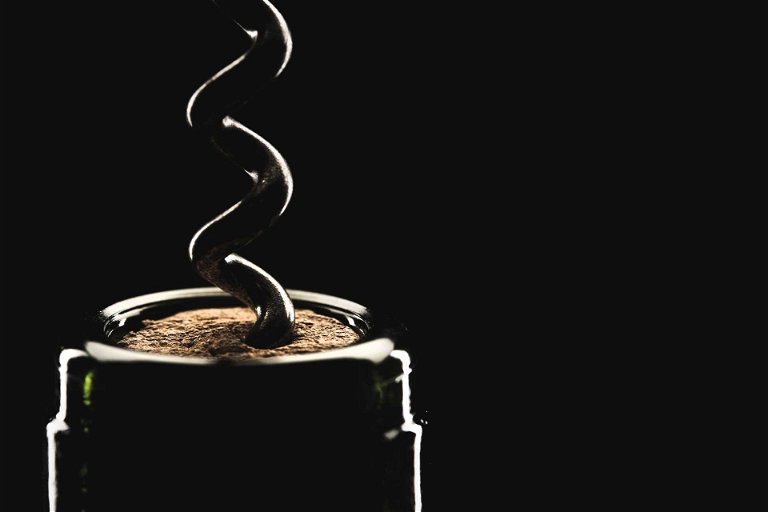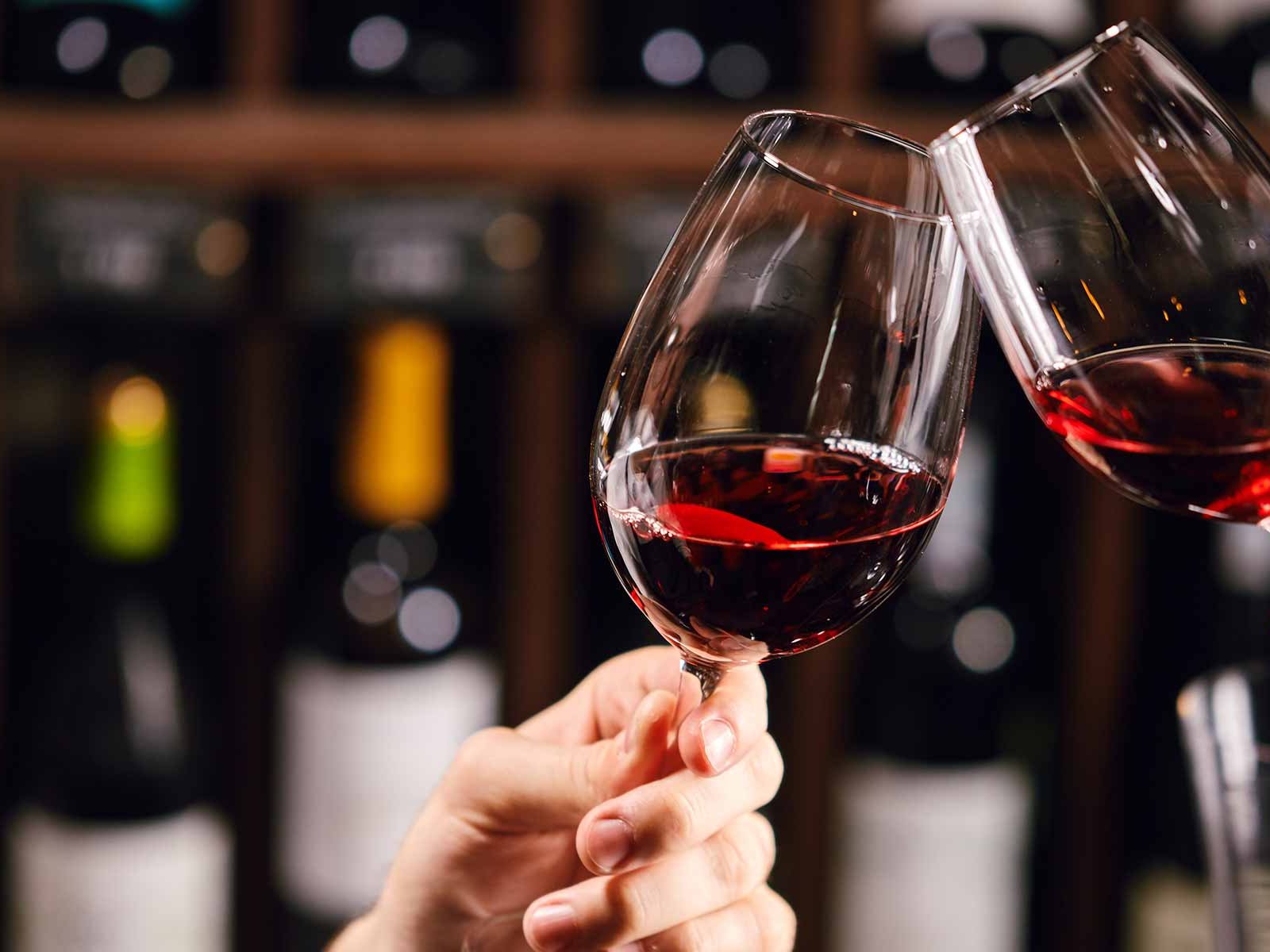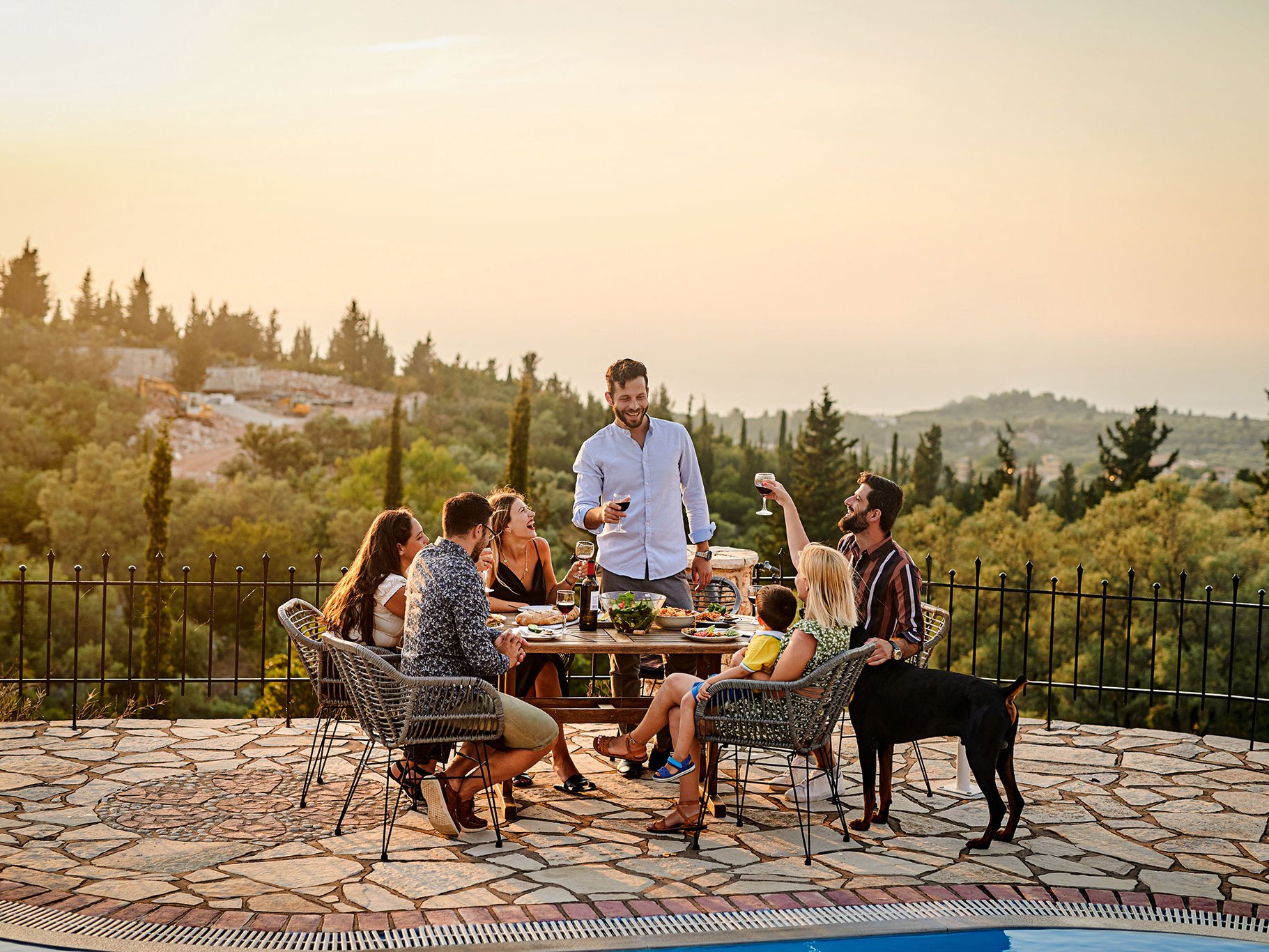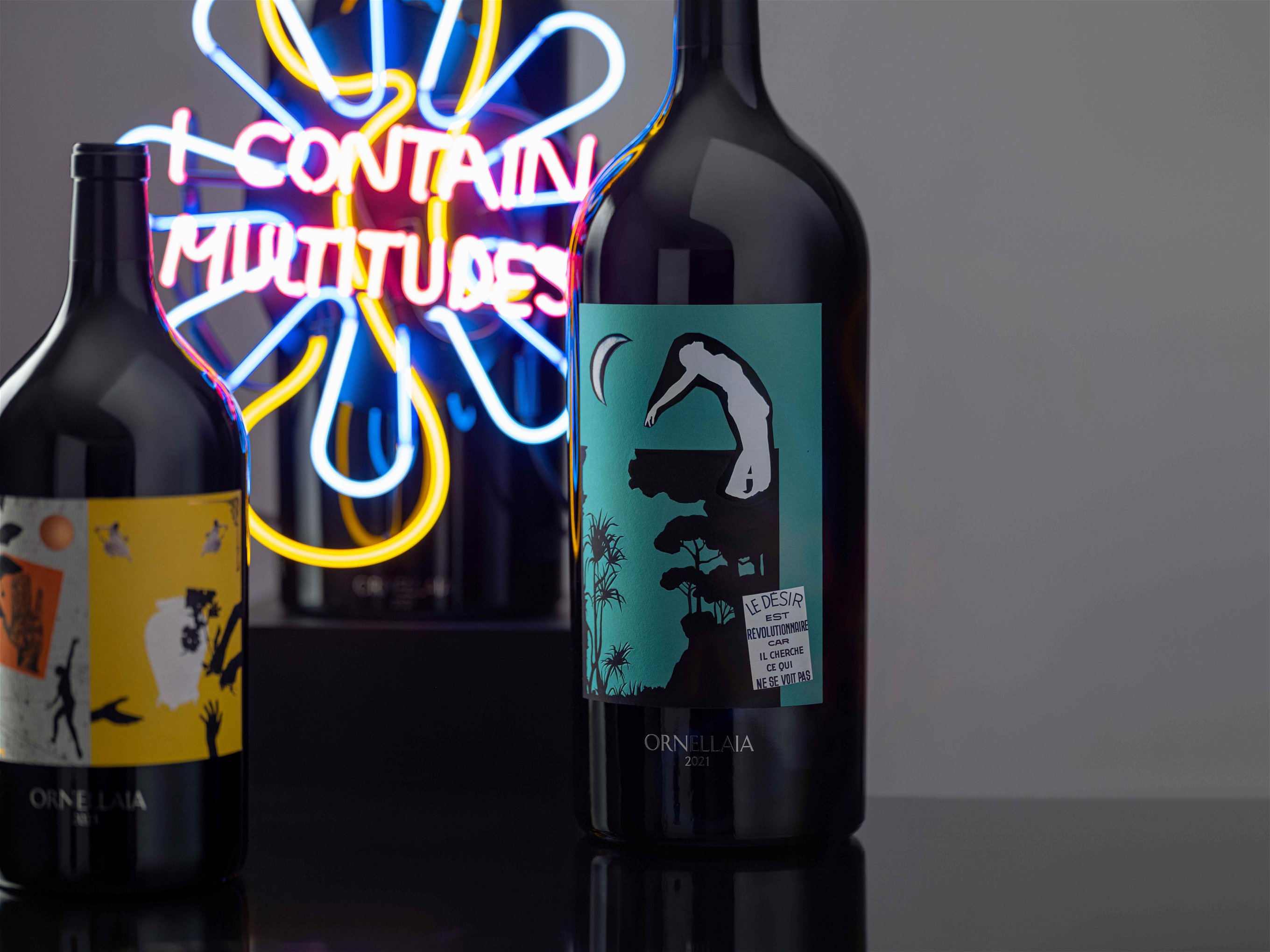How to Taste Wine Like the Pros
Who has never had the idea of conducting an expert wine tasting at home? Falstaff explains everything you need to know to hold a successful tasting, including a checklist for blind tasting.
We all have wine friends; some collect wines, some travel around the world visiting vineyards, the really keen ones even go on holiday grape picking or winemaking. So what do you do when you want to make the most of your friendship and your collective knowledge – host a wine tasting of course!
Let's set the scene: Elsa, Ed and Ernie have just come back from Alsace, they are buzzing with all the different wine styles, grape varieties and food. Beth is a Pinotphile and couldn't resist purchasing a lot of mature red Burgundy at auction, she's hoping her mates will chip in so that they can all taste the wines together. Victor has been collecting his favourite Bordeaux chateau for well over a decade and has generously offered to open different vintages for everyone to try. So here is our practical guide to hosting a wine tasting...with different permutations for all your friends.
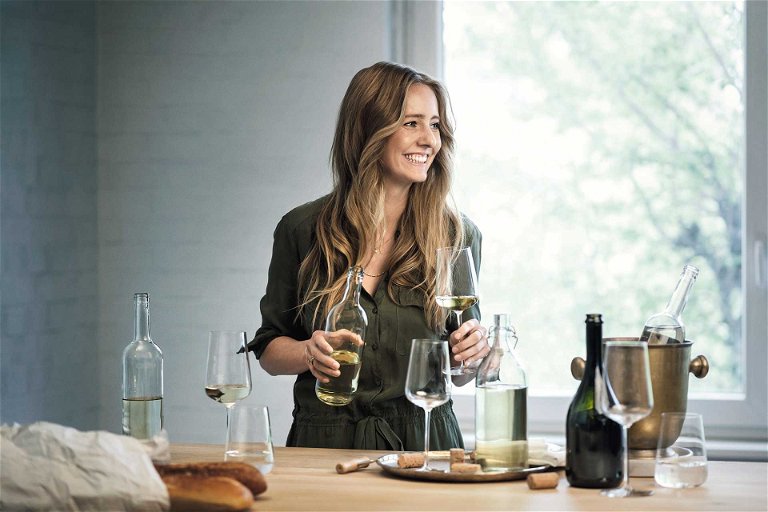
The tailor-made setting
First, be clear about the profile of your planned tasting. Will it be for exclusively hard-core wine geeks? Or are you looking for a balance of good food, chit-chat and a bit of wine talk? For serious tasters, one should plan a formal setting including a sophisticated tasting order, or possibly organise a blind tasting (see below) with accompanying material on the table (photocopies from maps, for example, or a comparative compilation of published tasting notes). If a meal is to be served, this is best enjoyed after the formal tasting, which has the advantage that everyone can drink their favourites with the meal.
If enjoyment is as much a part of the evening as the wine then try not to neglect the wines too much; the tasting will work best if the wines are the focus of the evening, but of course you must also ensure your guests have time to be together and exchange ideas. The more informal, the trickier the invitation, especially when it comes to perfume and aftershave: Explicitly forbidding its use in the invitation should be superfluous in a circle of wine connoisseurs; on the other hand, such an announcement seems brusque in a primarily social evening context albeit with a wine tasting. Regardless, powerful fragrances will disrupt a wine evening, as will excessive notes of onion and garlic wafting from the kitchen – chefs please note!
For a serious wine tasting, you'll probably want to record exactly what you had in your glass and how the individual wines presented themselves. A few sheets of paper at each place are therefore useful, even if some people may use laptops or phones. You can collect ratings from all participants (agree on your scale first) and then calculate the mean for each wine and create a ranking at the end of the evening. Spreadsheets are super quick and useful for this and the file can be circulated afterwards. For a more sociable, informal tasting, such evaluations may be inappropriate, as not everyone may feel called to be a juror. But you could, for example, appoint a minute-taker to write down an opinion on each wine from the comments around the table.
The sample sequence
In a professional tasting, one tries to compare only what is really comparable. Therefore, wine tastings are divided into 'flights' or 'series' of three, four or more wines presented at the same time. Elsa, Ed and Ernie, who want to taste their trophies from Alsace together with their friends, have white wines, red wines and sweet wines to taste on the same evening so they can reminisce. With such a varied programme, you should spread the different styles of wine over (at least) three flights.
For practical reasons, the number of wines you put next to each other in each flight depends on the number of available glasses (which should be of identical size and shape). For home use, three to five glasses is ideal; experience has shown that a larger number of glasses leads to a lack of room on the table, the discussion getting bogged down and wines being undiscussed or quickly skipped over.
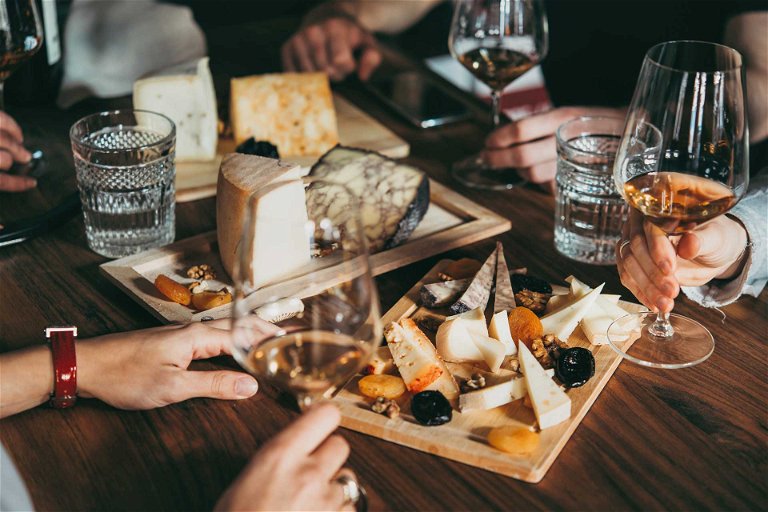
When planning the order of tasting, first determine the order of the flights, and then the order of the wines within the flights. As a general rule, sweet wines are placed at the end of the tasting, and within the group of sweet wines one should pay attention to the ascending order of residual sweetness, i.e. Kabinett and Spätlese wines should be placed at the beginning of the sweet flight, wines such as Sauternes, Tokaji and Trockenbeerenauslese wines at the end. The reason for this is that hardly any other taste has such a lasting effect on the palate as sweetness. After having had tasted a sweet wine, dry wines taste green, bitter and very tannic if they are red.
Thus, the most sensible order for an evening with different wine styles is: Sparkling wine – white wine (dry) – rosé – red wine – fruity and sweet wines. If the dry white wines are primarily Riesling (with strong acids and residual sugar levels close to ten grams), be brave and pour the red wines first, especially if they are delicate wines such as Pinot Noir. You will be surprised how much high acid and a tiny amount of residual sugar can distort the flavour and profile of delicate reds.
Another ordering principle is from light to heavy. So if you stay with the same type of wine all evening, for example dry white wines, put Soave before Soave Classico or non vintage Champagne before vintage Champagne. Wines aged in barriques are best served after those with little or no wood influence.
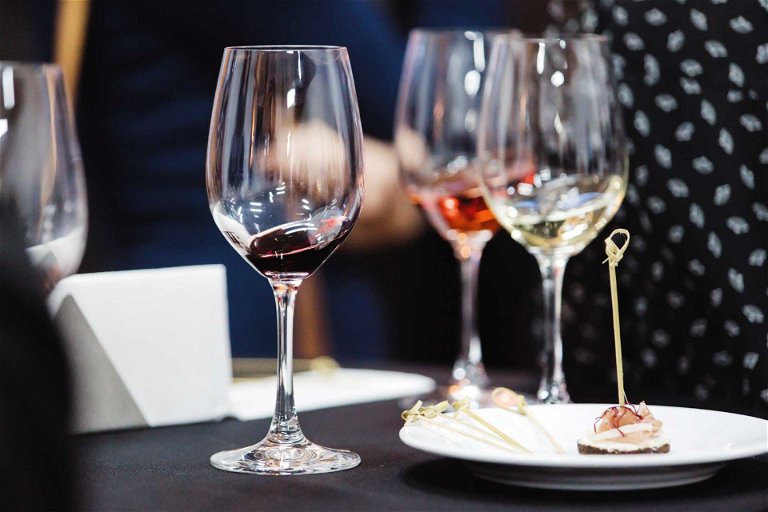
If tasting wines from classic Europe regions, wines can be ranked according to the regional quality pyramid: When Beth arrives with her Burgundy auction case then the simpler appellations such as basic Bourgogne or regional AOCs (eg. Hautes-Côtes) should be placed before the communal appellations, and among the communal appellations those of the Côte Chalonnaise (Mercurey, Givry, Rully etc.) should be tasted before the more prestigious communes of the Côte de Beaune and Côte de Nuits, and within these, Village wines should be sampled before Premier Cru and lastly Grand Cru.
If different vintages are involved, as is the case, for example, with the twelve vintages Victor has collected from Bordeaux, the question arises as to whether one ranks them from young to old or vice versa. At tastings with wines from different vintages (known as vertical tastings), one usually ranks from young to old: thus, one starts with the fresher wines with strong sensory impressions, in order to proceed to the finer, more complex mature wines. In France, vertical tastings are organised the other way round, they start with the oldest wine based on the consideration that a fresh palate does more justice to the richness of nuances and the subtleties of mature wines, and that the power of the younger wines will still give pleasure at an advanced hour. This is especially valid if tasting very old wines as they will change minute by minute in the glass due to contact with the air. Nevertheless, there is something to be said for both approaches.
If there is a certain homogeneity of the wines to be tasted – i.e. minor differences in vintage, origin, alcohol or sweetness – the order may random; this is the principal of blind tastings and this approach has practical advantages.
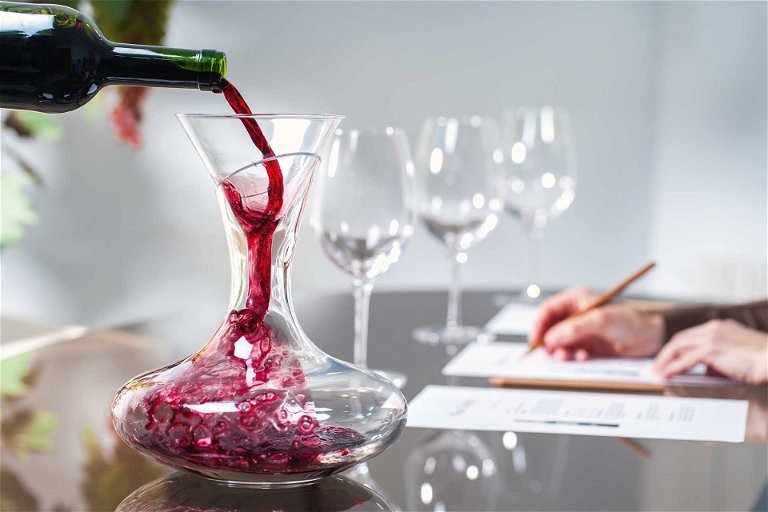
The equipment
Wine glasses are essential. Whatever glass shape is chosen it is indispensable for a professional tasting that all participants have identical glasses. A sensible measure at the start of the tasting is to 'avinate' glasses, i.e. to swirl them with a flawless and as neutral as possible wine. This removes any odours of washing-up liquid, musty cupboard or the undertone of egg white from the dishwasher.
Equally important is a corkscrew, most professionals use a waiter's friend and ideally you want one with two joints. For older wines and correspondingly crumbly corks, the use of a two pronged corkscrew (brand name AH-So) has proven its worth. However, this inexpensive instrument does require a little practice to use successfully. A development of the pronged corkscrew is the 'Durand' corkscrew, which combines the principle of the prongs (which slide between the cork and the bottle neck) with that of a spiral corkscrew. If, despite all precautions, the cork crumbles into the wine (yes – it even happens to professionals!) a standard household sieve will help.
Carafes are also invaluable utensils for a wine tasting. There are as many opinions as there are experts on the question of which red wines benefit from decanting. With young wines, decanting does no harm, but may not make much difference either. With more mature wines (from about 20+ years of age), one can hardly give better advice than to make a decision based upon an initial sensory test: If the tannins still have tension, a carafe rarely does any harm. Ditto if the wine has a reductive smell that gives the impression that the wine has closed down by being 'locked up' in the bottle.
Don't forget, white wines also benefit from the oxygenating effect of decanting, this is especially true for young wines still marked by the yeast and those of middle age.
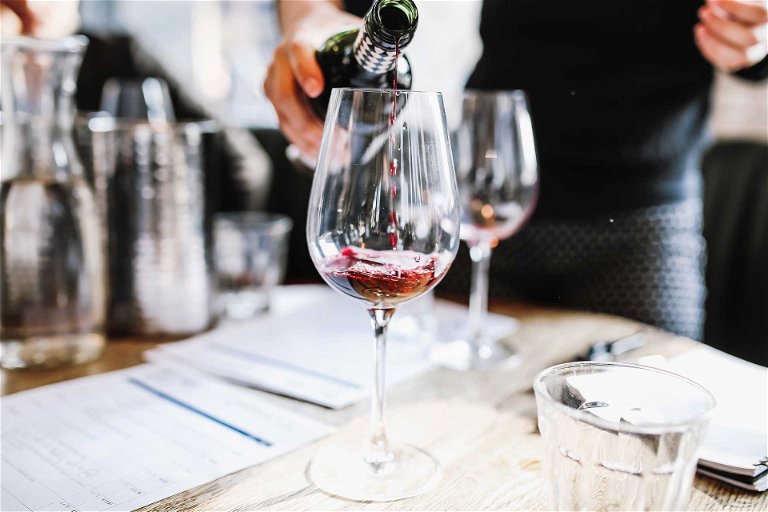
The service
Aside from decanting for the purpose of airing, it is also important when it comes to separating out any deposit. Wine bottles that have precipitated tannins at the bottom of the bottle should be stored upright for at least 48 hours before opening. With careful movements and against a strong light source, the presence and quantity of any sediment can be checked. Under no circumstances should the bottle be moved more than about 30 degrees from its vertical position during this process, as any deposit may otherwise be stirred up again. Once the sediment has settled, pour the wine by tilting the bottle very carefully until it is horizontal and watch both the wine flowing out of the neck of the bottle and the degree of turbidity visible in the neck against a strong light source. As soon as streaks begin to appear, stop pouring and leave the rest of the wine in the bottle.
If you want to spare a wine with sediment the influence of oxygen from decanting, you have to reckon with giving away about a quarter to a third of the bottle. The least loss occurs if you pour it into all the glasses in one go. Any intermediate setting down of the bottle in an even halfway vertical position will inevitably lead to the sediment being disturbed making the remaining contents cloudy and gritty. It is better to fill the glasses well immediately and not to plan a second round of pouring!
A word about serving temperature
It is a truism that white wines from the fridge are too cold. After half an hour of preparation, however, most white wines arrive in the glass at a suitable temperature, especially as they continue to warm up there. Be careful not to serve red wines too warm; in heated rooms, half an hour in the refrigerator is best before opening. Bottles that have sediment should be placed in the standing compartment.
Blind Tasting Checklist
- Remove capsules completely so that no logos or producer names are visible on the neck of the bottle.
- Wines in conspicuous bottle shapes should be decanted into well rinsed neutral shaped bottles using a funnel.
- Covering: Tasting bags made of fabric are less prone to accidents than cardboard sleeves as the bottles tend to slip out of the sleeves. A good alternative is to wrap the bottles in aluminium foil.
- Number each different wine using small adhesive paper labels. A written documentation of which wine belongs to which number should be made when preparing the samples so it can be checked when the wrapping is opened.
- Tasting sheets with the wine numbers and flight order should be prepared for everyone.
- Note: Not everything about a wine needs to be blind. For example you could state the grape variety, but not the country, region or vintage. Or, you could give the vineyard (e.g. Richebourg) but not the producer or vintage.
